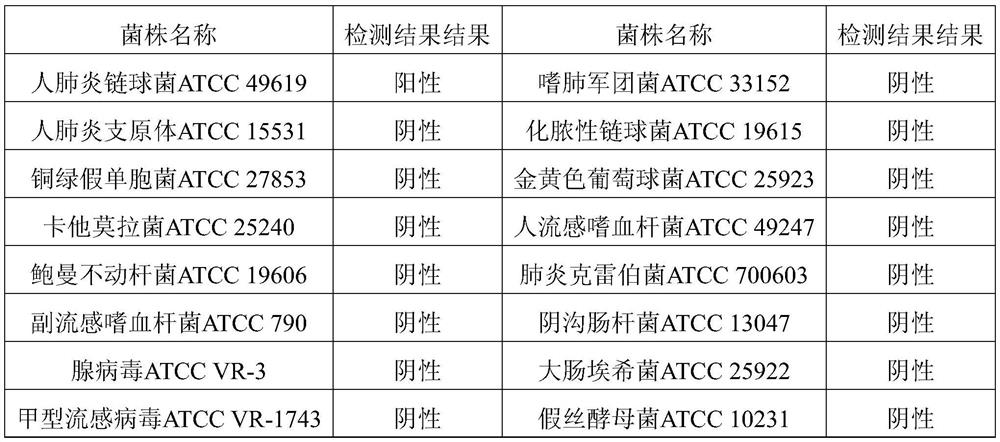Human Streptococcus pneumoniae surface protein monoclonal antibody and antigen capture ELISA kit
A Streptococcus pneumoniae and monoclonal antibody technology, applied in the field of immunology, can solve problems such as long time, difficult to meet rapid identification, unsuitable
- Summary
- Abstract
- Description
- Claims
- Application Information
AI Technical Summary
Problems solved by technology
Method used
Image
Examples
Embodiment 1
[0035] Embodiment 1 Preparation of recombinant human Streptococcus pneumoniae surface protein PspA
[0036] 1) Cloning and expression of human Streptococcus pneumoniae PspA gene
[0037]Bioinformatic analysis of human Streptococcus pneumoniae surface protein PspA (accession number in NCBI protein database is AAF27703.1) gene, combining GC content, codon preference, mRNA secondary structure, RNA instability motif, mRNA Considering the stability of free energy, etc., the DNA coding sequence was optimized, and at the same time, the whole gene sequence was chemically synthesized after introducing the restriction site NdeI at the 5' end, the termination signal TAA and the restriction site XhoI at the 3' end (the whole sequence synthesis was handed over to Completed by GenScript Biotechnology Co., Ltd., the artificially synthesized gene fragment was connected to the vector pUC57 at the time of delivery), denoted as PspA'. The full sequence of the gene and the encoded amino acid seq...
Embodiment 2
[0041] The preparation of embodiment 2 human Streptococcus pneumoniae surface protein polyclonal antibody
[0042] 1) Immunization of New Zealand purebred rabbits
[0043] The recombinant PspA protein prepared in Example 1 was mixed with complete Freund's adjuvant, emulsified and used as an immunogen to immunize 2 male New Zealand rabbits, each rabbit was subcutaneously injected with a total amount of 2ml, and the total amount of antigen was 2mg / rat. Afterwards, the emulsion formed by recombinant PspA protein and Freund's incomplete adjuvant was used to immunize once every two weeks, for a total of 5 times, and the amount of antigen was the same as that of the first immunization. 3-5 days after the fifth immunization, a large amount of blood was taken from the heart, placed at 37°C for 1 hour, then placed in the refrigerator at 4°C overnight, and serum was collected the next day.
[0044] 2) Determination of polyclonal antibody titer
[0045] Recombinant PspA protein was use...
Embodiment 3
[0053] The preparation of embodiment 3 human Streptococcus pneumoniae surface protein monoclonal antibody Sp-10#
[0054] 1) Immunization of animals
[0055] Using the recombinant human Streptococcus pneumoniae surface protein PspA prepared in Example 1 as an antigen, 5 8-week-old BALB / c mice were immunized, and 2 were not used as immunized mice as negative controls. After the initial immunization antigen was fully emulsified with an equal amount of Freund's complete adjuvant, the mice were subcutaneously injected into the back of the immunized mice at a rate of 100 μg / mouse. After that, the second immunization was performed by intraperitoneal injection with the same dose of antigen fully emulsified with Freund's incomplete adjuvant at an interval of three weeks, and the third time was injected intraperitoneally with the same dose of antigen fully emulsified with Freund's incomplete adjuvant at an interval of 2 weeks. immunity. Blood was collected from the tail vein 15 days ...
PUM
 Login to View More
Login to View More Abstract
Description
Claims
Application Information
 Login to View More
Login to View More - R&D
- Intellectual Property
- Life Sciences
- Materials
- Tech Scout
- Unparalleled Data Quality
- Higher Quality Content
- 60% Fewer Hallucinations
Browse by: Latest US Patents, China's latest patents, Technical Efficacy Thesaurus, Application Domain, Technology Topic, Popular Technical Reports.
© 2025 PatSnap. All rights reserved.Legal|Privacy policy|Modern Slavery Act Transparency Statement|Sitemap|About US| Contact US: help@patsnap.com


